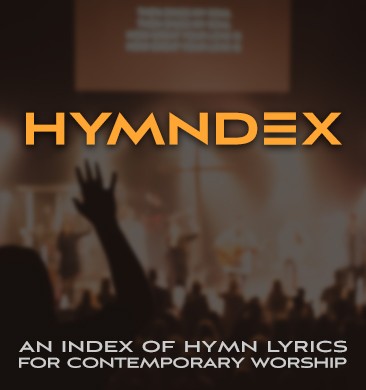Taylor Burton-Edwards discusses the differences between “Ancient-Modern” and “Blended” worhship:
Ancient-future and “blended” are very different kinds of animals, at least as those two terms are usually used.
Ancient-future reflects the work of really two separate 19th and early 20th century ecumenical movements that were mostly parallel, and then came to interact– the liturgical renewal movement growing out of the “re-un-earthings” of a lot of early Christian liturgical materials beginning in the late 19th century (some of which were a matter of having discovered how to translate some of these early languages again) PLUS the significant turn in the larger global mission movements toward what folks like Lesslie Newbigin would popularize as “indigenous mission.”
The result of the liturgical scholarship-liturgical renewal movements was we now had a much firmer handle on the basic patterns and practices of earlier Christian worship, West and East— pre-Middle Ages, pre Reformation, and in some cases pre-Constantine/ Theodosius. The discovery and subsequent publication of reams of scholarship on these texts made it clear that Christians could be worshiping now far more in line with what early Christians knew and experienced. This scholarship also made available to many, for the first time in English, the rich treasury these texts were and could provide.
Parallel with all of this was the growing awareness in mission circles that simply trying to import the ecclesiological and liturgical practices of the “mother country/church” and particularly, simply translating such texts into the language(s) of the “receiving country” was actually doing violence to the incarnational nature of the gospel itself. Not to mention, it didn’t really work– unless, perhaps, you thought having identical worship worldwide was essential to keeping your empire together (as Britain certainly thought for a time!). What was needed instead– and so what came to be developed– was to find ways for the local culture to DO what Christian liturgy was DOING from within their own idioms and sensibilities– i.e., do liturgy that is deeply connected to the patterns of Christians in all times and places– but that just as deeply reflects and expresses the lives of the people and cultures who actually offer it now in real time.
So we have beginning by the middle of the 20th century multiple instances of such “ancient-indigenous” liturgical development going on “in the mission field” (primarily among Protestants) worldwide. And we have, in the work of people like Lesslie Newbigin and organizations like the World Council of Churches, what was at the time sort of a gradual “leaking back to America” of how this was proceeding in various places around the world.
While to be fair, there were all sorts of “ancient future” experiments with liturgy happening pre-Vatican II in the Roman Catholic world, including in the United States, it was primarily Vatican II that mainstreamed the process of moving Roman Catholic worship to earlier patterns and more vernacular expression. Nearly all of the “mainline Protestants” followed suit, creating new resources for worship now with language and technologies that speak of now on the same ancient “Basic Pattern of Worship”– Entrance, Word/Response, Table, Sending– that early Christianity seemed to have followed nearly everywhere, despite great diversity in local expression in terms of just how they followed it.
“Ancient-Future” is the term Robert Webber used (and possibly coined) to describe this confluence of ancient texts and practices with current indigenous missiology when he sought to explain these things among primarily Evangelical audiences, particularly folks whose roots were more in the Reformed and the 19th century holiness and early 20th century Pentecostal and “free-church” traditions. These persons and traditions, out of which Webber himself had come, generally had had little if any introduction to or involvement with the scholarship on early Christian liturgies OR the more widely ecumenical (and “mainline”) movement toward indigenous mission (and therefore also indigenous liturgy).
While appeals to “tradition” or “liturgical scholarship” or “ecumenical mission movements” might have little currency among his primarily evangelical audiences, the term “Ancient- Future” could ring true. Evangelicals could appreciate the value of what was ancient– very close or at least closer to the time of the Bible– even if they may have difficulty with the idea that liturgy might have some fixed written texts and ritual that mattered. They could also appreciate a drive toward future– and not just present– given the importance eschatology continued to play as a centerpiece in much of their theology and preaching, even as it was downplayed very often in “mainline” Protestant circles.
This is why one usually finds examples of what gets called “ancient-future” worship more openly called that among Evangelicals than among mainline Protestants in the US. I would also suggest that the more or less “free church” nature of many of these Evangelical traditions may have helped those who have found Webber’s way of talking about these things appealing to develop worship practices that were at once far more ancient and far more innovative than examples we may more typically see in mainline Protestant contexts.
The principle here, whether called “ancient-future” or something else, is basically the same. It’s about going deep and wide at once– about profound rootedness in the ancient (connectedness) and equally profound commitments to expression here and now (indigenous). It’s about submitting to old, old patterns (including at times old, old technologies, such as candles and incense) and at being ready to incorporate bleeding edge expression at the same time.
As such, “Ancient Future” worship is more of a “discipline” than a “style.” It isn’t about trying to please preferences or tastes of worshipers. It about a commitment to offering worship that is both deeply faithful and deeply relevant at onces. Put another way, ancient-future is not and done right cannot be a “consumerist” act done to “attract” others because it suits their tastes. Rather, it’s a very participatory act in which the assembly and its leaders seek to go deep, following ancient practices of our ancestors in the faith, and at the same time offer the best we have of ourselves today.
There are a few instances of this in the United Methodist Church– but they are the exception. I would observe they are also the exception in the ELCA, the Episcopal Church, and AMiA (Anglican Mission in America) as well, although the liturgies and liturgical sensibilities of these denominations are typically formed on the “ancient” side of “ancient-future” at least.
Blended worship, by contrast, as that term is most typically used, has generally been marketed (I mean that term!) as a “strategy” for worship used to try to “please” folks who “prefer” either “contemporary” or “traditional” worship, but who find themselves in congregations that may not be able to pull off either of those separately for whatever reasons. In nearly all the literature I’ve seen on this strategy over the years– mostly generated from within the “church growth consulting industry”– “blended worship” has been promoted explicitly as a consumerist strategy, a way to try to “satisfy every customer” at least a little. It has also been presented as a compromise strategy in the “worship wars” that marketers of the “brands” “traditional” and “contemporary” created and still, to some degree, sustain.
But it represents neither a cease-fire nor a real solution, long term. Nor can it, when its premises are still, all too often, about making sure different “market niches” can get some of what they’re looking for OUT of worship. The Bible has a name for worship focused on something other than offering ourselves to God, as the intense focus on “preference driven worship style” has become: idolatry.
Biblical worship by contrast to idolatry focuses on helping all people (not consumers!) offer (not get and consume!) the best of all their gifts to God in worship. We are, as Paul reminds, the body of Christ, gifted very diversely, not so we can get what we want, but so that in the offering of all of our gifts, including in worship, the body functions as Christ’s body to bless and transform the world.
That’s why I, like my predecessors in Worship office at GBOD, Dan Benedict and Hoyt Hickman, am fairly adamant about pastors doing what they can to move congregations away from any approach to worship design and planning that is about consumerist assumptions and toward an approach to worship that helps the whole assembly offer its best gifts to God. Call it “liturgical renewal,” or call it “ancient-future” or call it “connected and indigenous worship”– this basic approach embodies far better who we are and whose we are as the body of Christ, connected in a communion of saints and offering our sacrifice of praise and thanksgiving to God, than any labels such as “traditional,” “contemporary” or “blended,” can ever hope to do.





